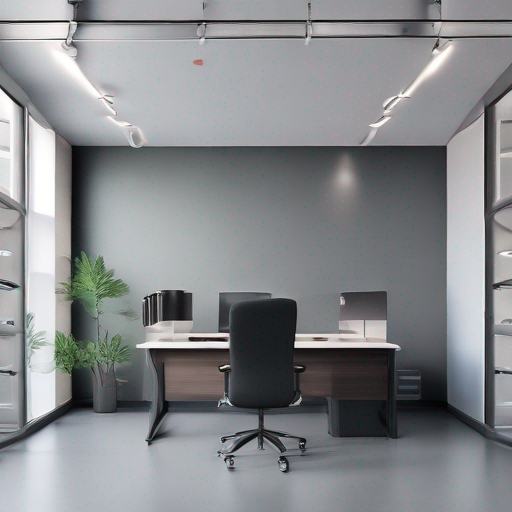
Modern Office Design Trends Revolutionize Workspace Experience Today
The modern office has undergone significant transformations in recent years, driven by technological advancements, changing workforce dynamics, and shifting employee expectations. As a result, traditional office layouts have given way to innovative design trends that prioritize comfort, collaboration, and productivity. In this article, we'll explore the latest modern office design trends and their impact on workspace experiences.
Wellness-Focused Design
One of the primary concerns in modern office design is employee wellness. With increasing awareness about mental and physical health, offices are incorporating features that promote relaxation and rejuvenation. Examples include:
- Biophilic elements: Adding plants, natural light, and outdoor spaces to create a calming atmosphere.
- Ergonomic furniture: Encouraging employees to move freely with adjustable desks, comfortable seating, and noise-reducing materials.
- Meditation rooms: Providing quiet spaces for mindfulness and meditation practices.
Collaborative Spaces
The modern office is no longer just about individual workstations. Collaborative spaces are becoming increasingly popular, fostering creativity and communication among team members. Some key features include:
- Open-concept areas: Combining workspaces with communal zones to facilitate knowledge-sharing.
- Flexible meeting rooms: Offering different layouts and technologies for various meeting formats.
- Whiteboard walls: Encouraging brainstorming and creative problem-solving.
Technology-Integrated Design
Modern offices are embracing technology to streamline workflows, enhance collaboration, and boost productivity. Some notable trends include:
- Smart lighting: Automating light levels based on natural light availability or employee activity.
- Interactive whiteboards: Enabling seamless data sharing and presentations.
- Virtual reality (VR) and augmented reality (AR) integration: Enhancing training, meetings, and entertainment.
Sustainability and Adaptability
As concern for the environment grows, modern offices are prioritizing sustainability and adaptability. This includes:
- Energy-efficient systems: Implementing LED lighting, solar panels, and green roofs.
- Modular design: Building spaces that can be easily rearranged or repurposed.
- Repurposed materials: Incorporating recycled or reclaimed materials into office design.
Key Takeaways
| Trend | Description | Benefits |
|---|---|---|
| Wellness-Focused Design | Incorporates biophilic elements, ergonomic furniture, and meditation rooms. | Promotes employee well-being, increases job satisfaction, and boosts productivity. |
| Collaborative Spaces | Features open-concept areas, flexible meeting rooms, and whiteboard walls. | Fosters creativity, encourages knowledge-sharing, and enhances team collaboration. |
| Technology-Integrated Design | Includes smart lighting, interactive whiteboards, and VR/AR integration. | Streamlines workflows, boosts productivity, and enables seamless communication. |
| Sustainability and Adaptability | Emphasizes energy-efficient systems, modular design, and repurposed materials. | Reduces environmental impact, saves costs, and increases space flexibility. |
Discover the Best in Modern Office Design
For more inspiration on modern office design trends, explore Amazon's comprehensive selection of books on interior design and architecture. Browse bestsellers like "The Power of Half: The Quest for a Simpler Life at Home" by David Bach or "Design Like You Give a Damn: Building Change from the Ground Up" by Cameron Sinclair.
Visit https://amazon.com to start your journey in creating a modern office that prioritizes employee well-being, collaboration, and sustainability.
